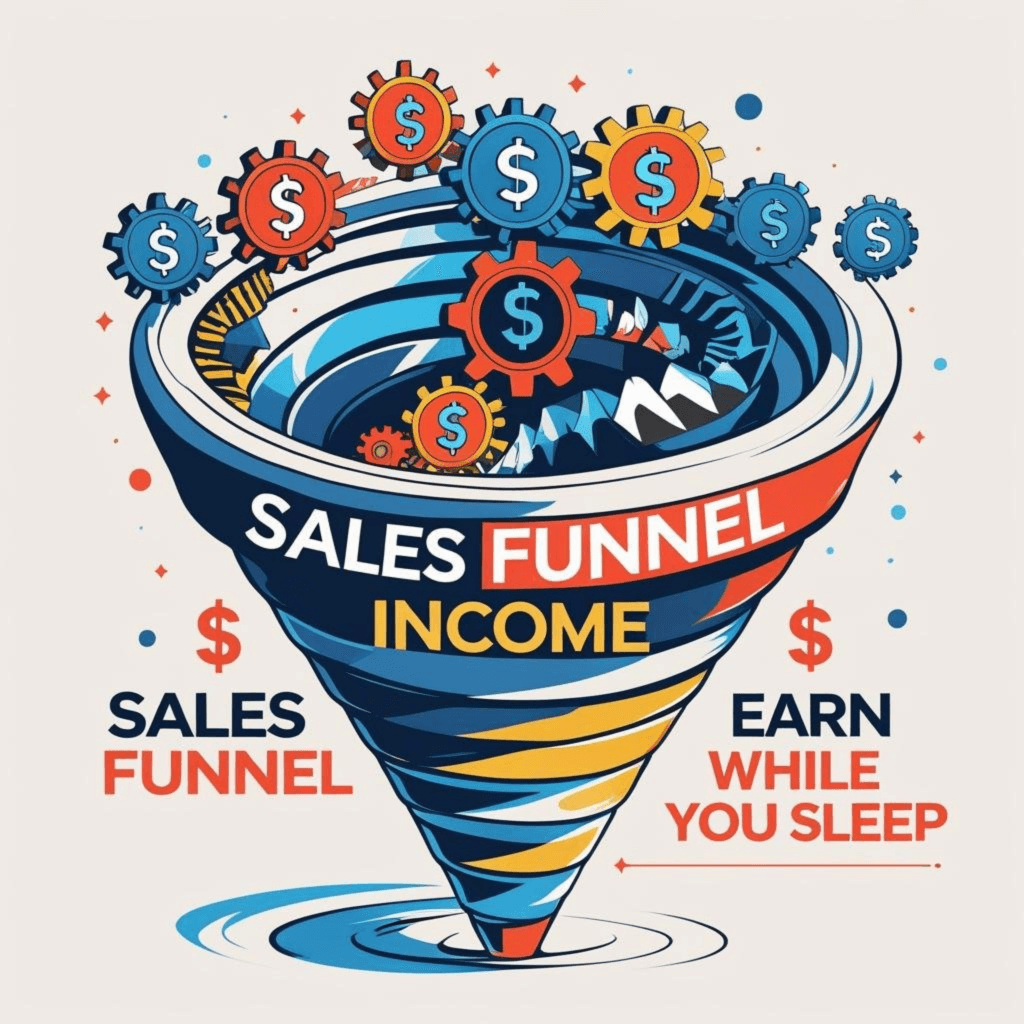Sales Funnels
What Is a Sales Funnel?
A sales funnel is a strategic framework that visualizes the journey your ideal customer takes from first discovering your brand to making a purchase and beyond. As they progress, the pool of prospects narrows hence the “funnel” metaphor. It typically includes stages like Awareness, Interest / Consideration, Decision, Action, and even Retention and Upsell.
Why Sales Funnels Matter
- They guide visitors with clarity instead of leaving them confused focusing each step on specific goals.
- Funnels can raise conversion rates by 2–3× compared to a standard website layout
- Built-in automation turns casual browsers into engaged leads even if you’re not watching.
“A funnel helps solve this problem by guiding people step‑by‑step toward making a purchase. Instead of leaving them lost … a funnel gives them a clear path.” -As Reddit users succinctly put it: Reddit
The Stages of a Sales Funnel (and How to Use Them)
1. Awareness
Prospects discover your brand through social media, blogs, ads, or referrals. You catch their attention with value-packed content and a strong hook. This is your chance to make a memorable first impression and show that you understand their pain points.
2. Interest / Consideration
Now curious, they explore your offerings reading blog posts, viewing case studies, or signing up for webinars. At this stage, they’re gathering info and comparing options, so your job is to educate, engage, and showcase how you’re different from the rest.
3. Decision (Intent / Evaluation)
Prospects evaluate your offer’s value. You can provide demos, sample posts, strategy sessions, or testimonials to build trust. Make it easy for them to envision success by offering proof of results, guarantees, or side-by-side comparisons.
4. Action (Conversion)
This is where visitors become customers. A clear offer, doubt‑free pricing, and compelling CTAs make saying “yes” easy. Remove friction with secure payment options, FAQs, and mobile-friendly checkout so they can take action confidently, without second-guessing.
5. Retention & Upsell (Optional Post‑sale)
Keep customers delighted! Send thank‑you emails, ask for feedback, encourage referrals or follow‑on services or upgrades. Ongoing support, client-exclusive resources, and surprise bonuses can help boost loyalty and increase lifetime customer value.
Summary & How It Fits Your Marketing Vision
- A sales funnel organizes how people move from discovery to paying client.
- You guide prospects through awareness → interest → trust → decision.
- Automation, value, and strong CTAs turn casual visitors into consistent customers.
- Takeaway: Offer a small bonus on sign-up and then gain leads back into your funnel via email nurture.
15 Key Takeaways: What a Sales Funnel Is & Why It Matters
- A Sales Funnel is a Strategic Framework
It visually maps out the customer journey from discovery to purchase, allowing you to guide prospects with intention and clarity. - Funnels Start with Awareness
This is when someone first hears about you through content, ads, SEO, social media, or word-of-mouth. - Interest is Sparked with Value
After awareness, the funnel nurtures curiosity by offering something helpful like a lead magnet, blog post, free trial, or checklist. - Trust is Built Through Consistency
Showing up with authentic content, client testimonials, and proof of results positions you as a trusted authority. - The Decision Phase is Where Sales Happen
A smooth sales experience clear pricing, friction-free checkout, and reassurance helps prospects confidently take action. - Funnels Turn Confusion into Clarity
Instead of random browsing, your funnel guides people step-by-step toward your offer with purpose. - Strong CTAs Drive Conversion
Clear, action-oriented calls to action (like “Book Now,” “Download Free Guide,” or “Start Today”) push people to take the next step. - Automation Works 24/7 for You
With automated emails, landing pages, and payment systems, your funnel never sleeps even when you do. - Funnel Pages Minimize Friction
Every step is designed to reduce decision fatigue removing roadblocks and making it easy to buy or book. - Funnels Help You Segment and Personalize
You can tailor messages and offers based on where someone is in the journey—beginner vs. ready to scale. - They Increase Conversion Rates
Compared to general websites, funnels lead more visitors to take action thanks to focused copy and structure. - Each Funnel Stage Has a Specific Goal
Awareness = visibility, Interest = engagement, Trust = credibility, Decision = conversion. - They’re Measurable and Optimizable
Funnels let you track how many people move through each stage so you can improve what’s working and fix what’s not. - They Make Scaling Simpler
Once built, a good funnel can attract leads and generate revenue without constant manual input freeing up your time.
Next Steps: Ready to Launch?
Here’s how to take your funnel from concept to conversion-ready:
- Design a Funnel-Specific Landing Page
Create a dedicated page that clearly presents your core offer with focused messaging, visuals, and zero distractions. Include a strong headline, clear benefits, and a form to collect emails in exchange for a valuable free resource (like a checklist, content calendar, or strategy guide). - Offer a Lead Magnet That Solves a Specific Problem
Your freebie should be something your ideal client genuinely needs quick to consume, highly actionable, and directly related to your paid service. This builds trust and primes them for your offer. - Implement a Welcome Email Series
Set up an automated sequence (3–5 emails) to educate new leads about your brand, break down your service tiers, and share testimonials or examples. Include soft CTAs in each email and a strong pitch by the final message. - Use Social Proof Throughout the Funnel
Add screenshots of results, client wins, testimonials, or even short case studies. Social validation is a powerful trust-builder and can help visitors move from “maybe” to “yes” more quickly. - Simplify Payments and Make CTAs Clear
Ensure your payment buttons are visible, functional, and mobile-friendly. Use direct CTAs like “Get Started,” “Pick Your Plan,” or “Start Today” paired with service highlights or bonuses. - Retarget Visitors Who Don’t Convert
Install tracking pixels (Facebook, Instagram, Google) to follow up with site visitors using retargeting ads or follow-up emails. This keeps your offer top-of-mind and gives undecided leads a second chance to take action. - Follow Up with Upsells, Referrals & Reviews
After purchase, send thank-you emails and provide bonus tips or onboarding resources. Ask for a review, offer referral incentives, or suggest a plan upgrade to extend the customer relationship and increase lifetime value.
With these steps in place, you’ll not only launch a functional sales funnel you’ll create a system that builds trust, delivers value, and brings in leads on autopilot.

If you found this helpful share it on Social Media! Thank you
